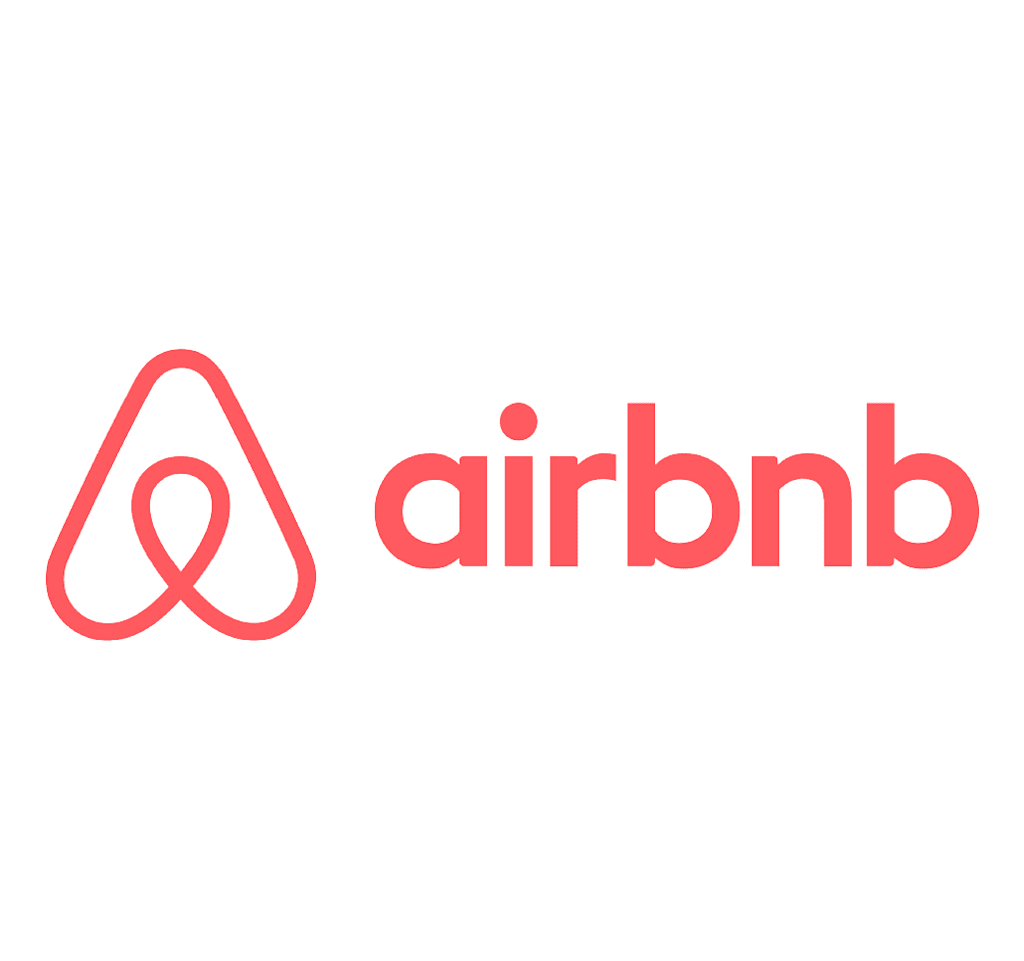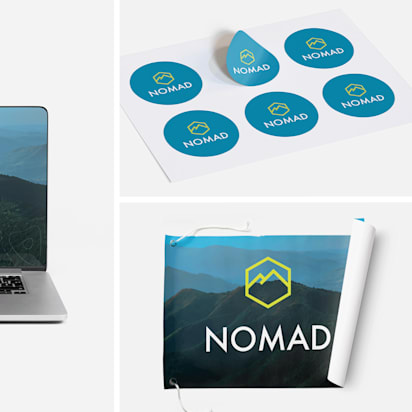Your logo is the foundation of your small business branding. It not only identifies what your business is called, but everything it represents. Read on to find out more about why logos are important and how to design a good logo.
Why is having a good logo important?
According to our survey, more than a quarter (27%) of UK consumers say they are more likely to buy from a small business with a well-designed logo. This small but mighty mark can say a lot about you and your business to potential customers, so it’s important to get it right to make sure you’re being remembered for the right reasons.
In fact, when asked about this, 52% of people said they would make their logo a high priority if they were to start their own business, and 10% would make it the single highest priority when they get started. This makes even more sense when you hear that 50% of shoppers expect large companies and small businesses to have equally good logos.
This sets the bar high when it comes to customer expectations, so getting your logo right should be as important as getting your financial and marketing plans together. Create a good quality, effective logo for your business with our guide below.
How to design a logo
1. Define your brand identity
Before you get started on your design, you’ll need visualise your brand identity. This isn’t as complicated as it may sound, and is well worth spending some time to get right. After all, almost half (49%) of our survey respondents believe that having the right visual identity can make or break a brand.
Grab a pen and paper and take some time to note down your story. Think about why you started your business, what sets you apart from other businesses, and your beliefs – things that are core to your company. This will help you define what your business represents, and what you want potential customers to understand about you. Once you’ve gone through this exercise, try to describe your brand in 3 words. These words will then help guide you through the next steps and ensure you’re getting the right message across.
2. Gather inspiration and ideas

Now comes the research stage! Look around at the logos and visuals of other brands and businesses you admire or like the look of. See what competitors in your industry are doing, too. Gather all your inspiration together in one place like Pinterest or a mood board so you can spot any themes or patterns that come up as you go.
Once you’ve got everything together, analyse what you have. Are there any themes connecting them like colour or shape? Do they have a particular aesthetic that calls to you? This will help you narrow down what appeals to you. Then, think about your audience. What do they need to understand about your business? Do any of the logos you collected fit that need? Are any of your competitors doing something similar that works well? Answering these questions will help you narrow down what could work for your business.
3. Choose a design style
The best logos are ones that truly represent what the business does and what it stands for in an easy-to-understand way. Almost a third (30%) of people in the UK said that a logo helps them identify what kind of brand they are purchasing from, so it’s important to not only choose a style that you like, but one that also speaks to what you do.
In order to make your logo design “you,” consider your industry. After all, depending on your sector, there are usually certain expectations around aesthetic. For example, a beauty business like a hairdresser that uses the expected aesthetic of a technology company may be more difficult for customers to understand immediately.

Also, think about the 3 words you came up with for your business in the brand exercise in step 1. How can you infuse these ideas into your logo? For example, if your words are quirky, fresh and fun, your design style will (and should!) be different to a business whose words are classic, traditional and bold.
Although there’s no wrong or right way to do this – after all, perhaps you want to deliberately break from typical ‘expected’ aesthetics for your industry – it’s worth remembering that the general public will most likely come with preconceived notions of what a certain industry logo will look like. Make sure that whatever style you choose, it represents your 3 words that summarise your business.
4. Nail down the details of your logo
Now you know what you want to convey to customers, you’ve done your research and you’ve decided on a style, it’s time to work out the details of how you want your logo to look. There are a few different ways you can go when designing a logo, but here are some options to consider:
Words
Your business name can act as your logo, and can be especially effective if your name is fairly short. In fact, 39% of our UK survey respondents said they prefer logos with words. If you decide to go this route, then play around with different font styles to get the look that represents you best. You could also use a monogram (like H&M), though when you start out, you may want to include the full business name as well to save any confusion. An example of this working well is Marks and Spencer, which only changed to the monogram M&S after it was already well-established and easy to recognise.

Symbols

This kind of logo uses a symbol to represent a brand. Think of Apple’s apple or Nike’s swoosh. The idea is to think of an image that is simple, easy to recognise and can be scaled up or down. This is important, as your logo will appear in all sorts of places – from your website to your packaging – so it needs to be simple enough to use in many sizes. Much like our previous example, you’ll probably need to pair your symbol with your business name in the beginning so people can start to associate the symbol with your brand.
Abstract

Abstract, geometric and conceptual treatments can make your logo look more modern, but can be tricky to pull off. For these kinds of logos, your shapes and colours will do more of the heavy-lifting to show off your brand values. However, they do allow a lot of freedom for exploration which will allow you to create something totally unique. Just remember that you’ll need to pair the logo with your business name to ensure people understand who it represents.
Mascots and emblems
If it fits your brand, you can choose to create a mascot to represent it. Mascots or characters are usually associated with fun and joyful looks, so can work well for brands aimed at children or that have a light-hearted tone. They’re very memorable, though try to keep the design simple so it can be used in a variety of ways. A similar logo treatment is to create an emblem or insignia to use as your logo. These are often seen as more classic or old-school, so if that aligns with what you want to convey, then this could be a great option for your brand.

Colour
Colour is an important component of any logo, and can make an impression before people even read the business name. Choosing your brand colours should also reflect your brand values and help represent your business. People strongly associate certain colours with specific emotions and associations. For example, blue is often associated with trustworthiness, black with sophistication and green with nature and eco-consciousness. To learn more in-depth about the best colours for logos, read our article.
5. Choose your favourite
Once you’ve explored your ideas, create a few different logo options, or ask a designer to do this, and choose the one you like best. It’s a good idea to test out your new logo to see how other respond to it. Before committing to a final design, put your proposed logo in front of friends, family and even current customers to get their feedback. Do they understand what kind of business you are? How does it make them feel about you? You could even ask them to sum up the logo in 3 words – if they are similar to your brand identity words from step 1, then your logo is doing its job!
Logo design tips
- The most popular logos are unique, memorable and versatile. Think of your audience – is your logo understandable in 2 seconds? If so, you got it! If not, work on it.
- Stay fresh. 38% of our survey respondents said that a company should change their logo when it starts to feel outdated, so don’t be afraid to update your logo from time to time.
- Keep it simple. If you’re trendy now, you won’t be in future. Try to avoid clichés and keep your logo uncomplicated for a more timeless feel.
- Work with a designer. Logos can be tricky to get just right, so it may be worth working with a professional to get exactly what you want – it pays off in the long run.
UK-specific wedding legalities
If you’re getting married in the UK, you’ll need to give notice of marriage at your local register office. This involves an in-person appointment with proof of ID and residence. It must be done at least 29 days before your wedding day. Make sure you’ve ticked this off early.
20 Most recognisable logos according to the British public (ranked in order):
- Apple
- Amazon
- Coca-Cola
- McDonalds
- Adidas
- Audi
- Nike
- BBC
- Cadbury’s
- BMW
- Disney
- Kellogg’s
- eBay
- Royal Mail
- Heinz
- British Airways
- Volkswagen
- Mercedes
About the designers
Two of the logos seen in this article were created by the experts at 99designs by Vistaprint. As your partner in an ever-changing world, we’re here to help – visit 99designs.co.uk to find a designer and get a logo for your small business.
ALMONAK logo created by: AlexSa
Louis James logo created by: SimpleIsGood
Vistaprint and the Vistaprint logo are trademarks of Cimpress plc or its subsidiaries. All other brand and product names appearing in this article and survey may be trademarks or registered trademarks of their respective holders to which Cimpress plc or its subsidiaries has no affiliation with or sponsorship from.







